Nem Tai Thính (Vietnamese Fermented Pork Ear Salad With Roasted Rice Powder)
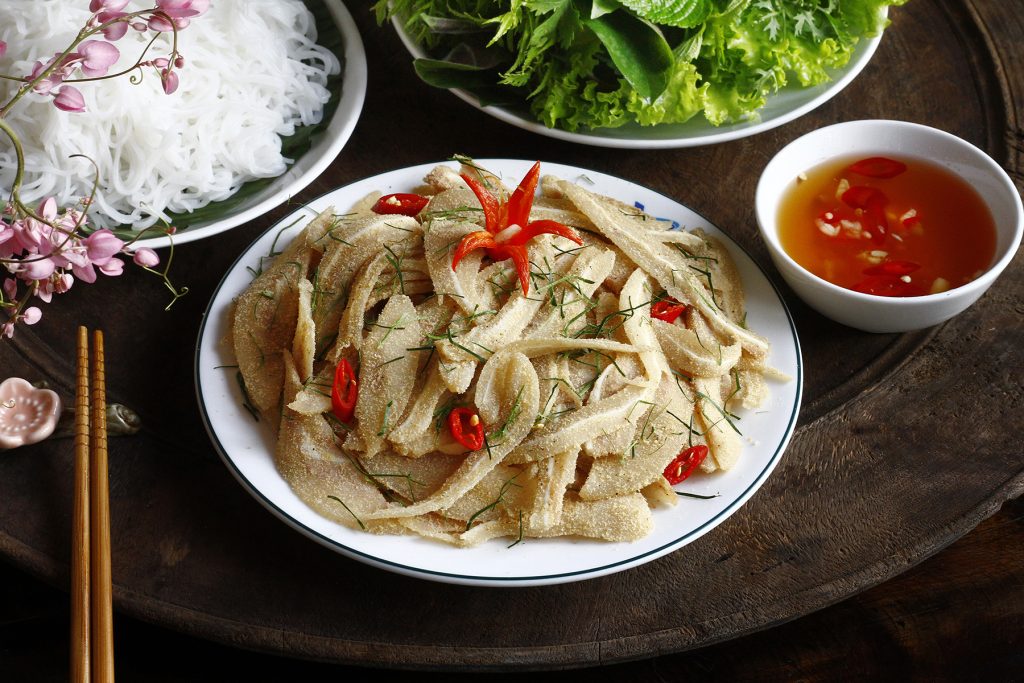
Ingredients
Protein Base
-
200g pork ear, cleaned and boiled
-
100g pork cheek, boiled and thinly sliced
Seasoning & Dressing
-
100g roasted rice powder (thính)
-
1 bulb garlic, minced
-
2 tsp fine salt or seasoning powder
-
3 tbsp vinegar
-
2 tbsp fish sauce
-
3 tbsp water
-
Optional: a pinch of MSG, sugar, and ground pepper
Nutritional Information
For: Meat eaters (not suitable for vegetarians)
Calories per serving: ~180–220 kcal (per 100g portion)
Key Nutrients
1. Lean Protein (15–18g)
- Source: Pork ear + pork cheek meat
- Benefits: Supports muscle maintenance and provides satiety with low fat content.
2. Collagen (High)
- Source: Pork ear cartilage
- Benefits: Promotes skin elasticity and joint health.
3. Carbohydrates (3–5g)
- Source: Toasted rice powder (thính)
- Benefits: Adds texture and nutty flavor while providing a small energy boost.
4. Healthy Fats (4–6g)
- Source: Pork cheek meat
- Benefits: Provides flavor and helps absorb fat-soluble nutrients.
5. Flavor Enhancers & Micronutrients
-
Allicin (from garlic): Supports immune and cardiovascular health
-
Acetic acid (from vinegar): Aids digestion and enhances taste
-
Niacin, iron, zinc (from pork): Essential for energy production, immunity, and red blood cell function
1. Prepare the Ingredients
- Clean the pig ears thoroughly by shaving off any hair and scrubbing with lime or vinegar. Soak the ears in cold water for about 10 minutes to remove odors.
- Clean the pork cheek. Place both the cleaned ears and cheek in a pot, add 1 teaspoon of salt, and boil over medium heat until the pig ears turn translucent. When you can easily pierce the thickest part of the ear with a skewer, it’s cooked.
- Remove the meat, let it cool, wrap it tightly, and chill it in the freezer for 20 minutes. This helps firm it up for easier slicing.
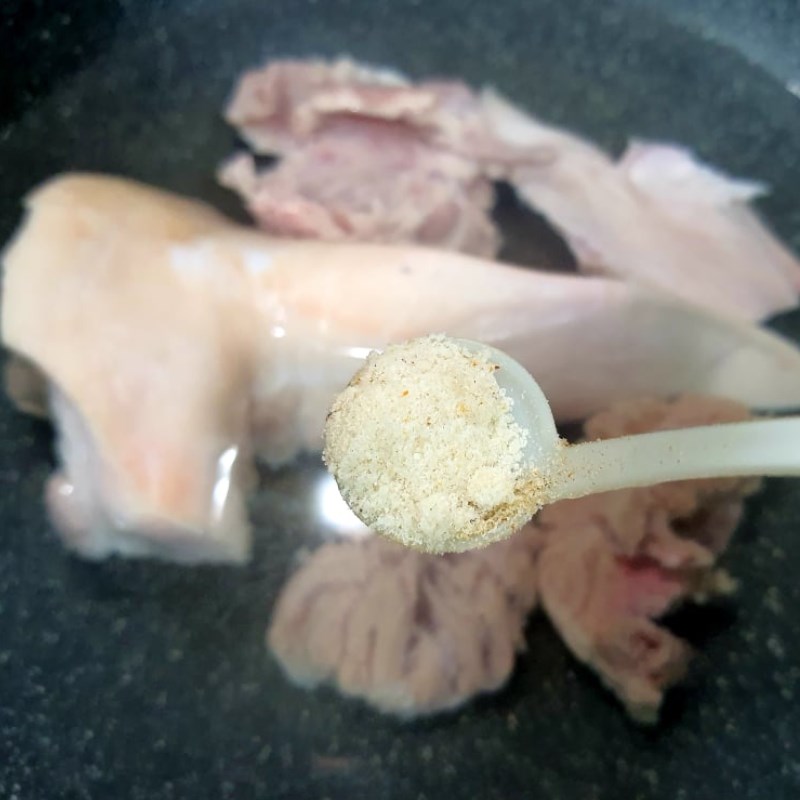
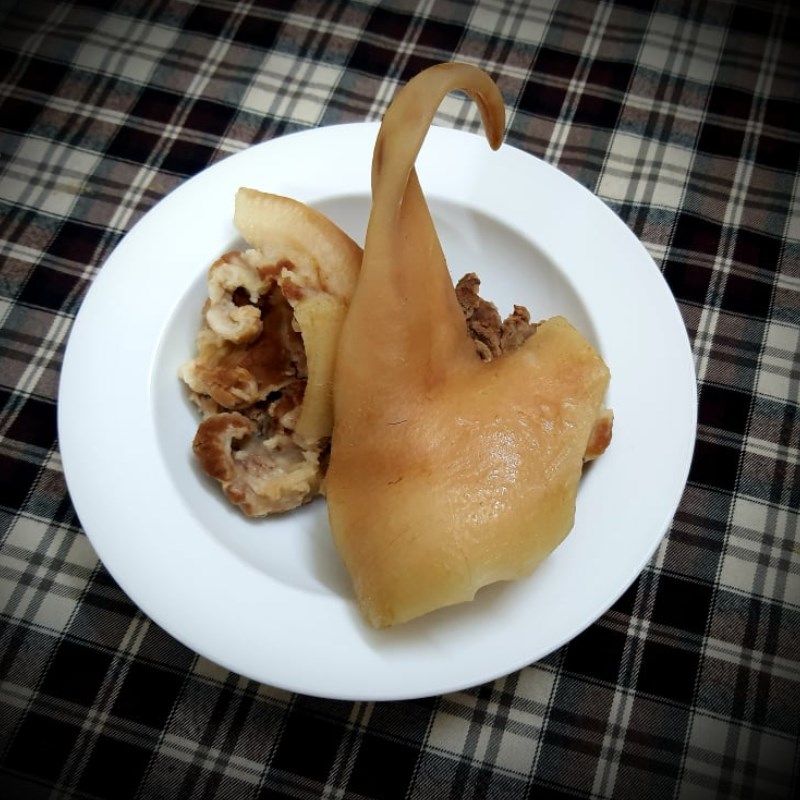
2. Mix the Salad
Thinly slice the boiled pig ears and pork cheek.
Place the sliced meat in a large mixing bowl. Add 1 teaspoon of seasoning salt, a pinch of MSG (optional), ground pepper, and minced garlic. Drizzle in 1 tablespoon of fish sauce and mix well to let the flavors absorb. Let rest for 20 minutes.
Then sprinkle in roasted rice powder (thính) and toss until the meat is evenly coated with the powder.
To make the dipping sauce, mix:
-
1 tbsp sugar
-
3 tbsp water
-
1 tbsp fish sauce
-
3 tsp vinegar
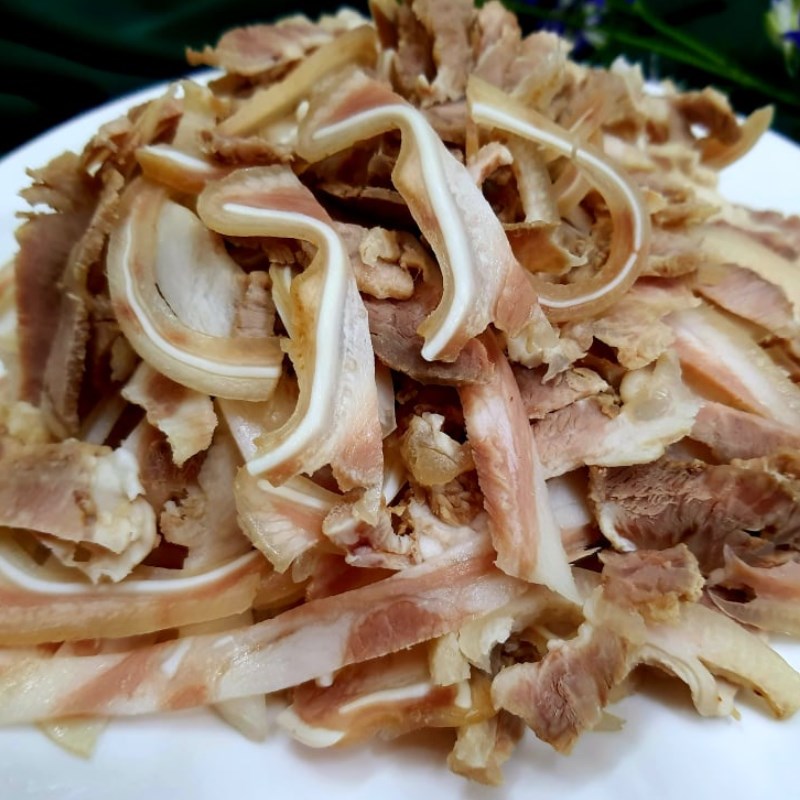
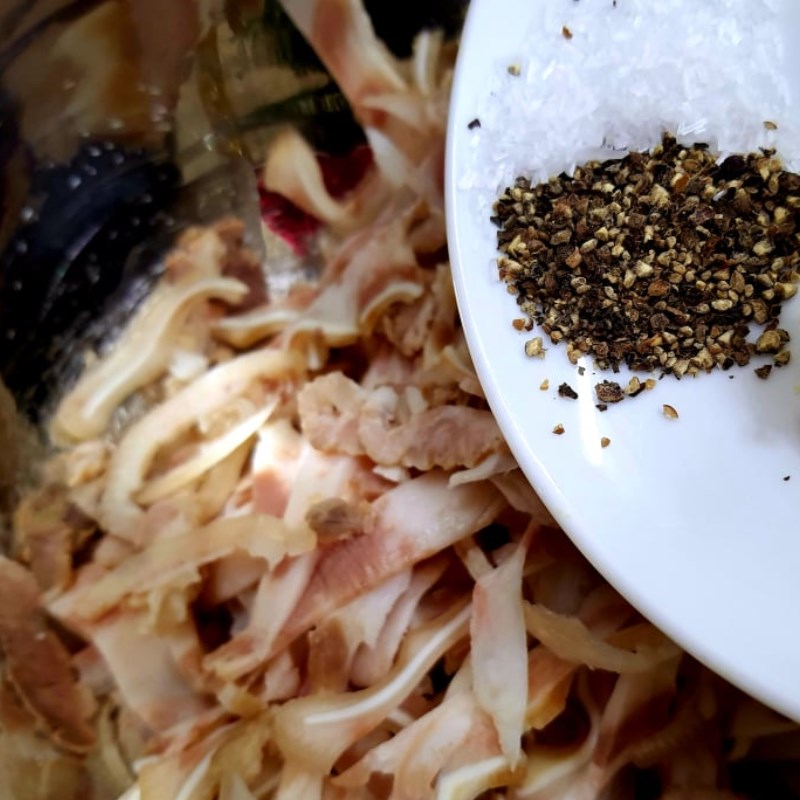
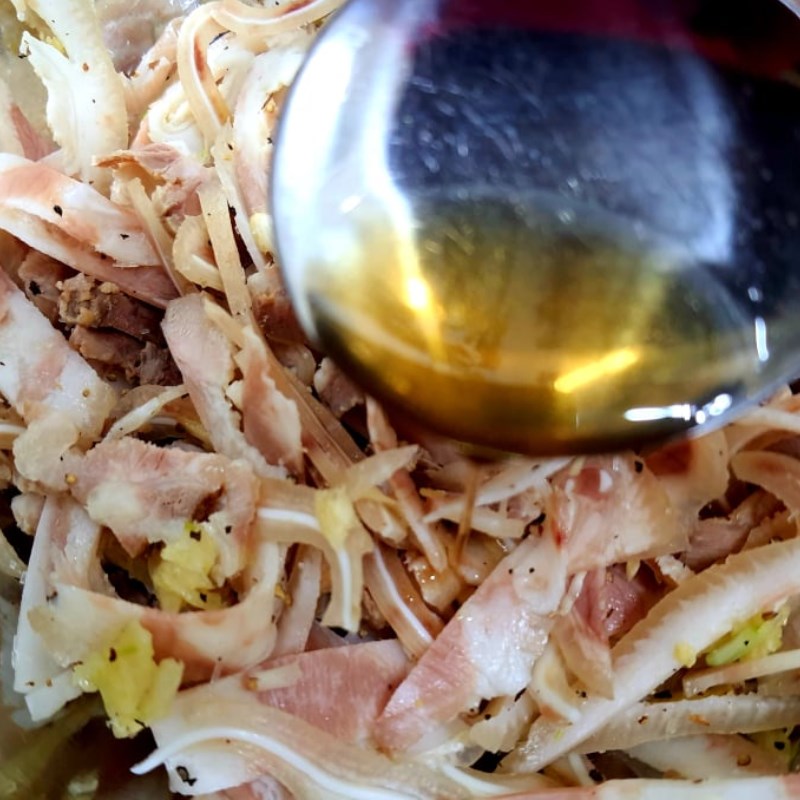
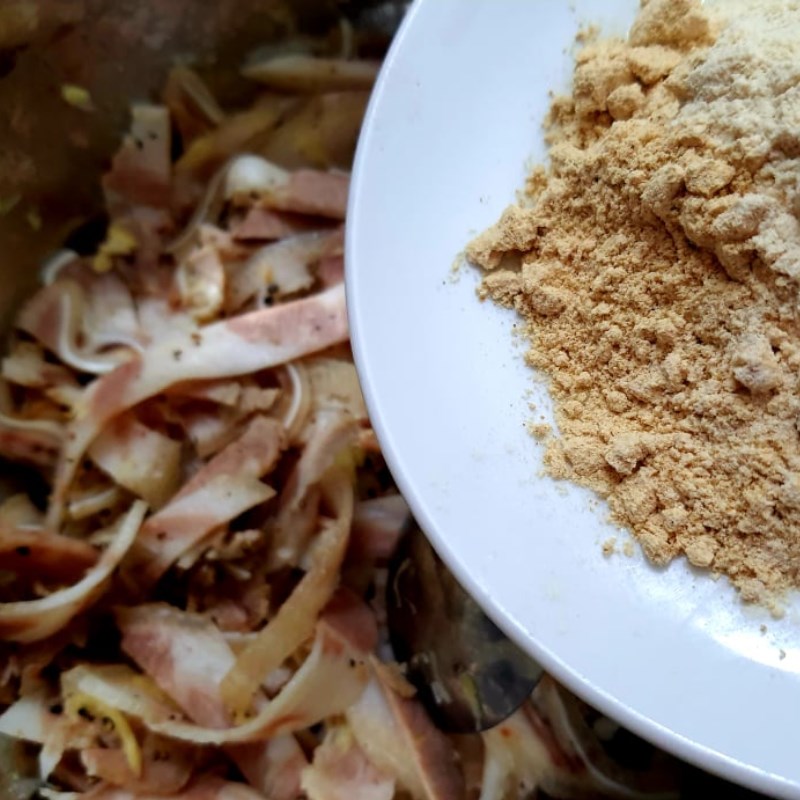
3. Final Product
- Serve the salad with fig leaves, Vietnamese herbs (like đinh lăng), or lettuce for wrapping.
- The final dish offers a perfect balance: crunchy pig ear, tender pork cheek, and nutty, fragrant roasted rice. It’s a perfect appetizer or drinking snack, often enjoyed with cold beer or rice wine.
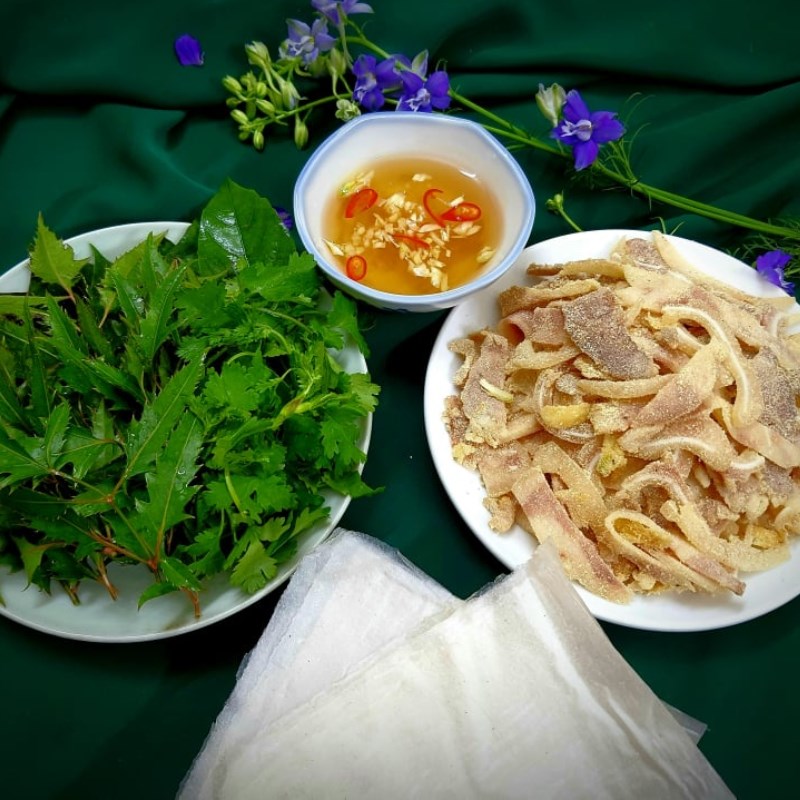

The Heritage of Nem Tai Thính (Vietnamese Fermented Pork Ear Salad With Roasted Rice Powder)
Nem tai thính is a traditional delicacy from Northern Vietnam, believed to have originated in rural villages across the Red River Delta, where pork was a staple protein and preservation techniques were passed down through generations. Unlike the fermented nem chua found in the central regions, nem tai thính focuses on freshness, texture, and the earthy aroma of roasted rice powder (thính gạo), a defining ingredient in many Northern dishes.
Historically, this dish was prepared during post-harvest seasons or festive occasions, when families gathered to celebrate abundance. Boiled pig ears and pork cheek—chosen for their balance of crunch and fat—were sliced finely and seasoned with simple spices like garlic, pepper, and fish sauce. Then came the key step: tossing the meat in thính, a powder made from roasted glutinous rice, which not only added a toasty flavor but also acted as a mild preservative.
Served with aromatic herbs such as lá đinh lăng, fig leaves, and dipped in a light sweet-sour fish sauce, nem tai thính became a staple of countryside hospitality—offered with a cup of rice wine to welcome guests, or shared among friends during year-end gatherings.
Today, despite modern adaptations and urban lifestyles, nem tai thính still holds its place in Vietnamese culinary culture. It reflects the ingenuity of the Northern kitchen: minimal ingredients, deep flavors, and an emphasis on texture and balance. Whether as a drinking snack (món nhậu) or a celebratory side dish, it carries the essence of Vietnam’s communal and resourceful food traditions.
![]()
(Vietnamese’s traditional drinking snack)